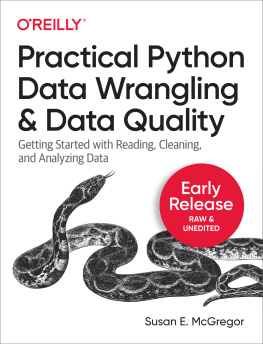Andrew Collette - Python and HDF5
Here you can read online Andrew Collette - Python and HDF5 full text of the book (entire story) in english for free. Download pdf and epub, get meaning, cover and reviews about this ebook. year: 2013, publisher: OReilly Media, genre: Computer. Description of the work, (preface) as well as reviews are available. Best literature library LitArk.com created for fans of good reading and offers a wide selection of genres:
Romance novel
Science fiction
Adventure
Detective
Science
History
Home and family
Prose
Art
Politics
Computer
Non-fiction
Religion
Business
Children
Humor
Choose a favorite category and find really read worthwhile books. Enjoy immersion in the world of imagination, feel the emotions of the characters or learn something new for yourself, make an fascinating discovery.
- Book:Python and HDF5
- Author:
- Publisher:OReilly Media
- Genre:
- Year:2013
- Rating:4 / 5
- Favourites:Add to favourites
- Your mark:
Python and HDF5: summary, description and annotation
We offer to read an annotation, description, summary or preface (depends on what the author of the book "Python and HDF5" wrote himself). If you haven't found the necessary information about the book — write in the comments, we will try to find it.
Gain hands-on experience with HDF5 for storing scientific data in Python. This practical guide quickly gets you up to speed on the details, best practices, and pitfalls of using HDF5 to archive and share numerical datasets ranging in size from gigabytes to terabytes.
Through real-world examples and practical exercises, youll explore topics such as scientific datasets, hierarchically organized groups, user-defined metadata, and interoperable files. Examples are applicable for users of both Python 2 and Python 3. If youre familiar with the basics of Python data analysis, this is an ideal introduction to HDF5.
Andrew Collette: author's other books
Who wrote Python and HDF5? Find out the surname, the name of the author of the book and a list of all author's works by series.













